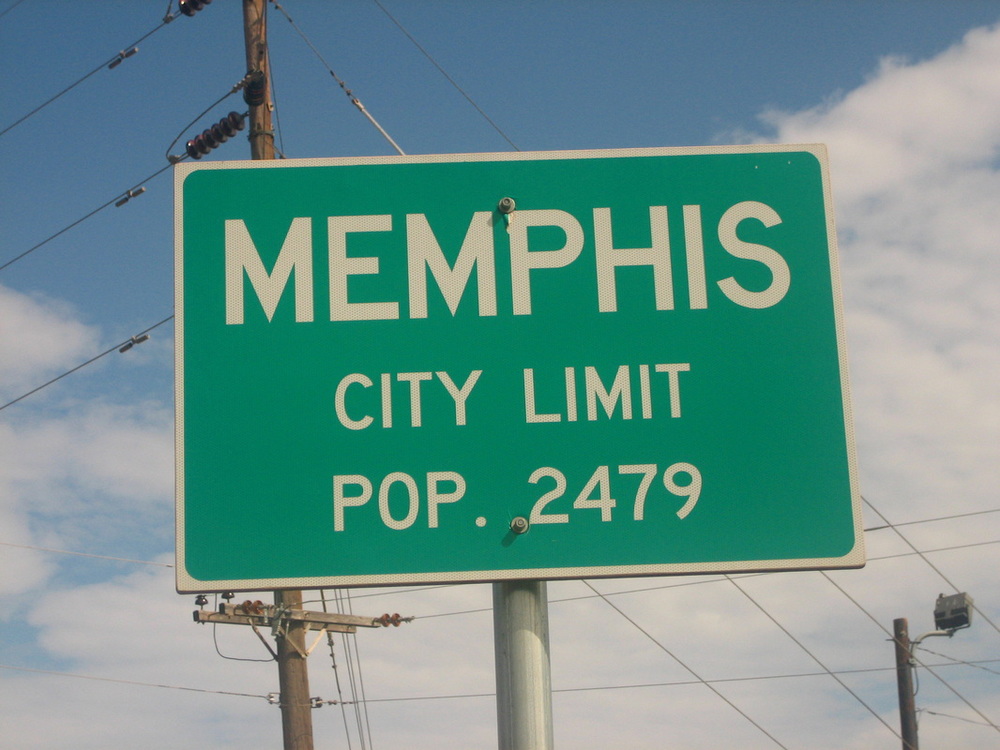Reversing Sprawl through Connectivity
We will try to provide periodic updates here this week from the Memphis Boot Camp, but you can follow everything that is going on at www.Memphis2014.com and at #membootcamp.
We will start the week by posting an op-ed by the Mayor of the city of Memphis, A.C. Wharton, Jr..
Last week, Smart Growth America released “Measuring Sprawl 2014,” a report examining development in 221 major metropolitan areas in the U.S. and evaluating development on a national index. With a score of 71, the greater Memphis region ranks near the bottom of the list at number 196 out of 221. Furthermore, Memphis ranks as the sixth most sprawled large metropolitan area.
 Photo: Billy Hathorn CC-BY-SA-3.0While these findings are disappointing, they are not surprising. The Memphis region has shown a pattern of sprawled development over several decades. Between 1970 and 2010, the city of Memphis population increased by 4 percent (619,757 to 645,237), while the geographic area of the city increased by 55 percent (208 square miles to 323 square miles). This is why the work we’ve done over the last few years, starting with Sustainable Shelby, to create a more sustainable city and region is so important for our future.
Photo: Billy Hathorn CC-BY-SA-3.0While these findings are disappointing, they are not surprising. The Memphis region has shown a pattern of sprawled development over several decades. Between 1970 and 2010, the city of Memphis population increased by 4 percent (619,757 to 645,237), while the geographic area of the city increased by 55 percent (208 square miles to 323 square miles). This is why the work we’ve done over the last few years, starting with Sustainable Shelby, to create a more sustainable city and region is so important for our future.
Since 2010, Memphis officials have worked to improve conditions for persons using bikes and have embarked on an ambitious process to create new bike infrastructure throughout the city. The result of 71 new miles of dedicated bike lanes, shared-use paths, and bikes are increased bicycle usage (double the usage in 2008) and improved safety (number of accidents reduced by 35 percent since 2008). Most of these new miles were achieved through coordination with ongoing repaving projects and did not require any new budgetary considerations in order to create on-street bicycle lanes. With an understanding of projects planned for the next three years, Memphis is expected to once again double the miles of bicycle-specific infrastructure within its limits by 2016.
The city achieved national recognition for its rapid progress towards becoming more bicycle friendly. In 2012, Bicycling magazine named Memphis the “Most Improved City for Cycling” after naming it to the “worst” list in both 2008 and 2010.
The city of Memphis is a partner with Shelby County government on the Mid-South Regional Greenprint and Sustainability Plan, a tri-state planning effort to connect green space and bike infrastructure across four counties in Tennessee, Arkansas and Mississippi. This ambitious effort not only calls for 400 miles of new trails over the next 25 years, but serves as a framework for managing growth across the region by placing an emphasis on balancing our most critical ecological areas with our population and employment centers to achieve the greatest value from infrastructure investments.
The need for this connection between housing and employment can be seen clearly in the Airport City area surrounding the Memphis International Airport. Considering that the Airport City area is Memphis’ largest employment center, Memphis developed a master plan for the area to encourage businesses and residents to locate closer to this center of commerce.
The plan provides recommendations that demonstrate the benefits of the last mile connectivity for manufacturers and distributors. For those who work in the area, the plan provides recommendations for greater opportunities for decent, affordable housing so individuals can have choices to live near where they work.
The city of Memphis, through the Mayor’s Innovation Delivery Team, is focused on using data to identify those areas in the core of the city where small, tactical investments generate a high return. This has been seen in the revival of Broad Avenue in Binghampton, South Memphis, Overton Square, Crosstown and other citizen-led creative placemaking efforts. Over the past two years, Memphis is cleaning up our older neighborhoods and investing our time and money in our core city neighborhoods that generate high returns. For example, city investments in Crosstown, Overton Square and Broad Avenue are returning people to the core of the city where we have seen a 40-50 percent reduction in vacancy rates in these areas.
These initiatives work in concert with a host of other programs being implemented throughout the region. As we finalize the plans for the Blueprint for Prosperity, a program to reduce the number of Memphians in poverty, initiatives targeted towards reducing sprawl will play an integral role in ensuring that all Memphians have access to jobs and resources. This administration is highly committed to reversing the negative trends of the past decades.
